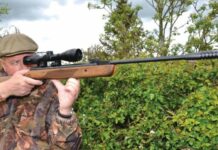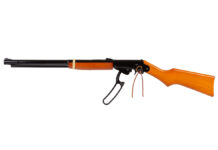Clay has been a Top Ten finisher in the WORLD CHAMPIONSHIP COYOTE CALLING CONTEST® (WCCCC) the last two years running. He has hunted coyotes all over the US. In this podcast, Clay talks in detail about coyote calling techniques in different areas of the US, how to call them, how to set up, and the advantages of using FoxPro electronic calls vs. mouth calls.
Table of Contents
Coyote Hunting Basics by Clay Owens
- This how to call coyotes video by Clay Owens will give you the basics and have you well on your way to successfully hunting coyotes. Clay Owens is coyote calling Champion and FoxPro field staffer.
- Learn how you can go on a predator hunt with Clay for some one-on-one hunting experience. (coming soon)
Why do we hunt predators?
- To control their numbers to protect livestock and game.
- For their fur.
- Because it is fun.
Stand Strategies:
- Hunt where the coyotes are. Scout just as you would for deer hunting. Landowners are usually willing to help. Your success will decrease drastically if you are just doing cold sets.
- It is very important to have a good vantage point where you can see 360 degrees if possible.
- Set up with the wind in your face, or at the very least a crosswind. Make sure you can see downwind however. Coyotes have exceptional senses. They have great eyesight and hearing, but their nose is something you’re never going to beat. 90% of coyotes will try to work the wind and get in behind you.
- In some cases, calling with a buddy is critical.
Three things drive coyotes to come in to a call:
- Food: Rabbit distress
 , fawn distress and mouse squeaks are the go-to calls you need in your arsenal. Hear Clay demonstrate in the video.
, fawn distress and mouse squeaks are the go-to calls you need in your arsenal. Hear Clay demonstrate in the video. - Fighting: Howling is more difficult. If you’re a rookie, Clay suggests you get yourself an electronic call. Listen to Clay do a location howl on the video. Clay also demonstrates the Female Challenge Howl and a pup distress call with a diaphragm call. Clay also shows us how to use the CS24 FoxPro Electronic call.
- Sex
How to call coyotes depending on the season:
- Fall: In the fall, pups are receptive to distress calls. The pups are still young, undispersed and hungry.
- Winter: In the winter, Clay still starts with distress sounds.
- Spring: Spring is when coyotes start to pair up for breeding season. This is when howling becomes more critical. You are appealing to a single male looking for some love, or trying to pick a fight. Sometimes Clay also uses a Pair Howl. Distress calls still work well in the Spring as well.
- Clay leaves the coyotes alone in the summer to raise their pups.
Other coyote hunting tips:
- Start your calling sequence softly, stepping up the volume gradually.
- If you call a coyote to within 100 yards, SHOOT!
- Often, they come as a pair or even a pack. After the shot, be quick to get on the pup in distress call to get them to stop.
- Clay thinks that there is a big difference in hunting mountain coyotes and plains coyotes. Mountain coyotes are more difficult, in his opinion. He thinks it’s because mountain coyotes have more predators such as mountain lions, wolves, and even golden eagles to contend with, so they are more cautious.
- Western vs. Eastern coyotes. Eastern coyotes are a bit bigger, because they have more food available, but Clay doesn’t think that there is much difference in hunting them.
- Coyotes come to fight, breed or find food. Learn how to appeal to those needs, and you’ll a successful predator hunter.
- Three things you need to master in order to be a successful predator hunter:
- 1) Good woodsmanship;
- 2) Learn the behaviour of coyotes and how to handle them as they’re approaching;
- 3) Practice your shooting.
- Clay scouts 75% of the time, and only spends 25% of his time actually hunting. Scouting is super important, as it doesn’t do any good to hunt where there aren’t any dogs. While he is scouting, Clay is in “stealth mode”, and usually in the dark. He likes to run up and down backroads looking for tracks and scat piles. He also likes to stop every once in awhile and howl, patterning an area where they live, and also learning the pack dynamics i.e., is there a dominant male in the area, or a bunch of pups in a big group?…hunting each will be different. While he’s scouting, he is quiet, and tries not to be seen or winded as you looks for sign and vantage points that will make good calling setups. He also takes notes of what direction the wind needs to be blowing from in order to hunt that setup and waits until the conditions are right before hunting it.
- If you find a dead cow, or a road kill deer, you know they won’t be more than a mile away from that free meal, so that’s a bonus. When he finds that situation, he calls there “pretty soon”. Coyotes will travel a long way to feed on a dead cow, so take advantage of the opportunity. You may get the chance to hunt coyotes that don’t even live in the area while they’re getting a free meal.
- Clay almost exclusively uses FoxPro electronic predator calls. With their calls, you can replicate almost any type of call you need to.
- Pack dynamics will dictate your hunting strategy.
- If you’re dealing with a family group, he uses more vocalizations as opposed to distress sounds (excluding pup distress). Males will circle to get the wind, and females will charge right in.
- Breeding season is late winter, through early spring (January, through early March). They will start pairing up in January, so you’ll start using more vocalizations. Family howling sequences; female single howls; male challenge howls; and female challenge howls. He will often just howl one single time, and then wait ten minutes for them to come.
- Calling to an entire pack can sometimes be pretty easy, when you hear them howling. Clay will often just make a “desperate” distress sound for about five seconds, and then wait. If they’re within a few hundred yards, they could be in range in under a minute. If they don’t come, you might try it a few more times.
- Clay’s go-to sounds are howling (all variations); rabbit distress; deer fawn distress; any kind of bird distress sound; rodent distress; and one of his favorites is an antelope fawn distress sound.
- Don’t start out too loudly. Start with a 30 to 60 second sequence of a super low rabbit or rodent distress calls. Then wait two minutes before starting the next sequence.
- Then he will go into two, one minute sequences of mid-volume rabbit distress a minute each, with a two minute break between each sequence.
- If nothing has shown up, he might throw in some howling.
- The entire setup will last 15 to 25 minutes. Mountain coyotes however, are more cautious, and sometimes take 30 to 40 minutes to come in.
Discover why thousands of people have trusted us with their adventures.
Request Pricing Or More Info Talk To a Consultant











































